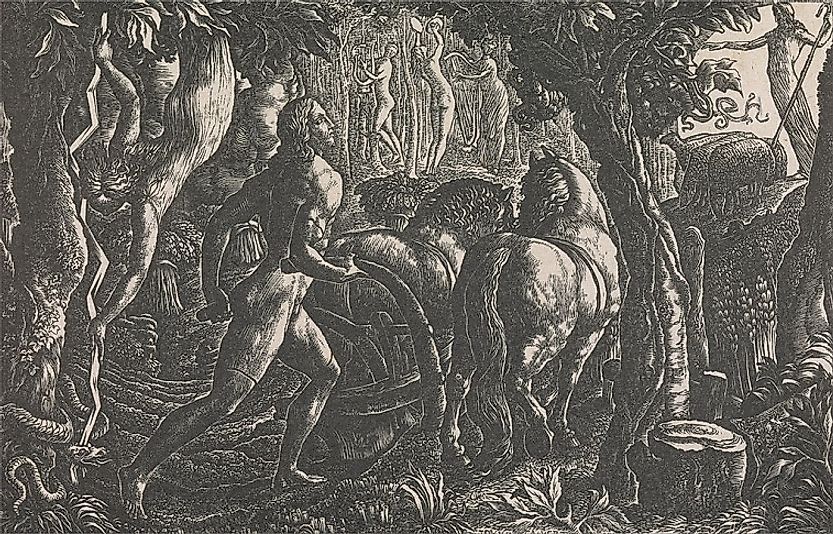The Ancients Art Movement Of Shoreham, England

5. Overview of the Style -
The Ancient art movement of Shoreham, England was the first formalized British artistic group. It presented itself as an oppositional break away from the mainstream academic art establishment and instead looked back to an idealized version of the past. They pursued equality among group members which is a conventional hierarchical structure in the art world. Shoreham promoted the wearing of a revivalist costume similar to one worn by the Nazarenes. Samuel Palmer was at the forefront in advocating for wearing the costume. The costume as depicted in Richmond’s chalk drawing of Palmer is a round-necked pleated smock under a coat with a loose untidy collar and lapels. It is combined with a long beard similar to the one of Jesus Christ.
4. History and Development -
The Ancients art movement was a group of young artists who were brought together by their attraction to archaism in art, and inspired by the works of William Blake. Blake was two generations older than the group members, and they met at his apartment which was known as House of the Interpreter. The core members of the group were Samuel Palmer, George Richmond, and Edward Calvert. Their impact was not felt in England, but several group members later became significant artists in the country. Their main aim was encouraging communal living as was the case in the past.
3. Notable Artists and their Works -
One of the most famous artists of the movement was Edward Calvert, who lived from 1799 through 1883. He was a member of the Navy at an earlier stage in his life and later joined the Plymouth and the Royal Academy where he studied visual arts. Some of his artwork includes exquisite miniature wood engravings and metal etchings. Fredrick Tatham (1805-1878) was probably the most notable member of the group as he is the one who took care of Blake’s wife, Catherine, after his death. After Catherine’s death, Fredrick claimed that she had left him all Blake’s work. This did not go down well with another group member, John Linnell, who argued that Blake’s sister should inherit the artwork. He later joined the Millenarian sect, leading him to destroy most of Blake’s works claiming that the devil inspired them. He was a sculptor and a painter, and although his works mainly imitated early Renaissance styles, he later changed into more conventional works. Samuel Palmer (1805-1881) was a landscape painter and etcher. He started by making mystic paintings but later had to turn to more conventional paintings to make a living after he got married. After his death, his son burnt all his paintings claiming that he was saving his father from further embarrassment. Other members included George Richmond, Francis Oliver Finch, Henry Walter, Welby Sherman, and John Giles, among others.
2. Decline and Subsequent Movements -
The group was in existence for around ten years. Their works were said not to ignite outrage, and no one was interested in buying them. They also received little commission when the arts were displayed in exhibitions. As such, it was unsustainable, and the group slowly and gradually shifted into making more conventional artworks. After their decline, other similar groups emerge including the Nazarene movement and the Barbus movement in France. Later, the Pre-Raphaelite Brotherhood group emerged in England, and this was the most successful group of its kind ever. Some members of the Pre-Raphaelite Brotherhood included William Hut, John Everett, and Dante Gabriel. These artists became very successful with major collections in museums across the country.
1. Legacy -
The Shoreham Ancients did not leave any concrete legacy as a group. However, as individuals they inspired other formalized brotherhoods and artistic groups to be formed later on. Most of the individuals' works were also destroyed as few contemporaries were interested in them at the time. Their activities were not well documented, and most information about the group was obtained from family members.







